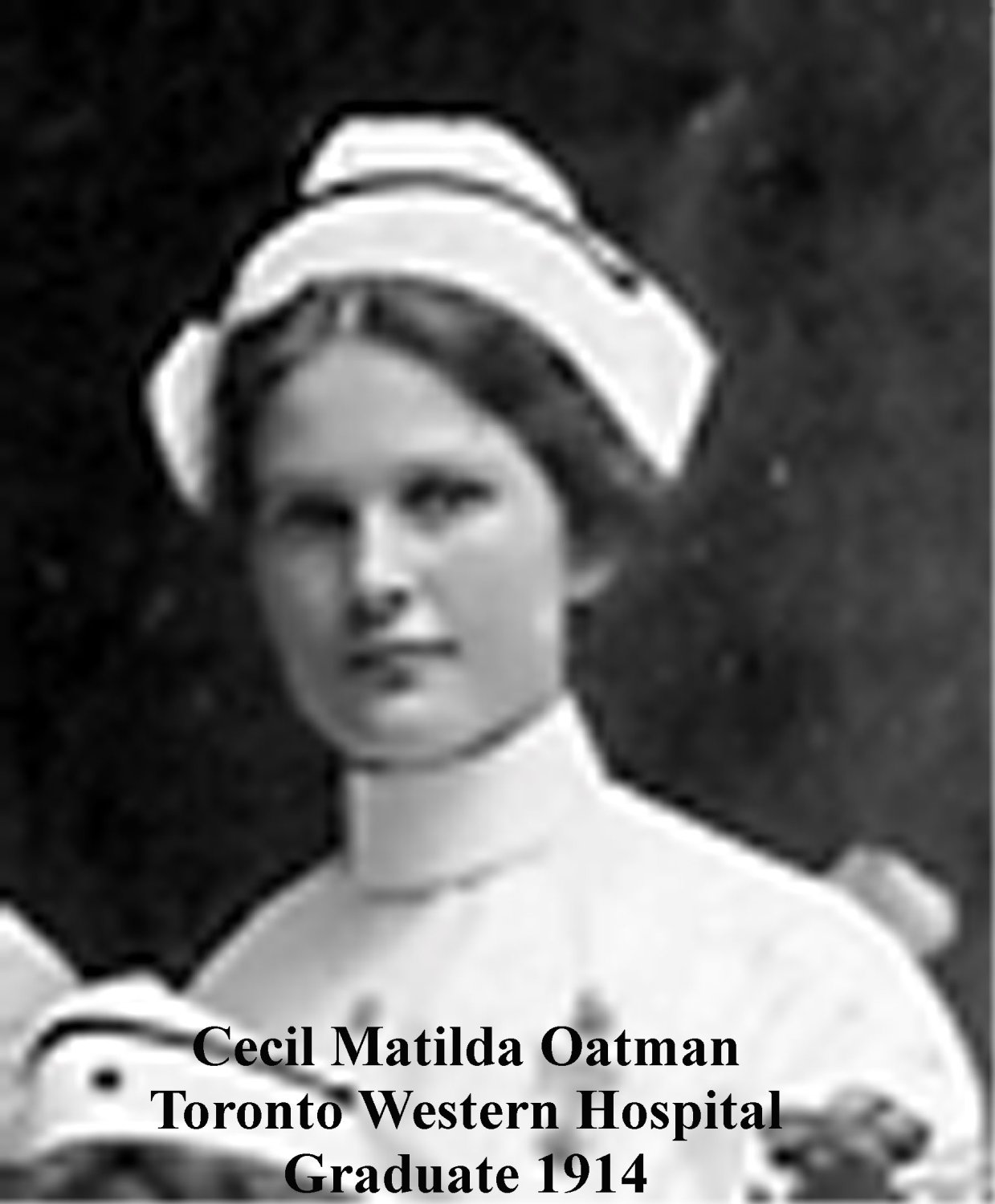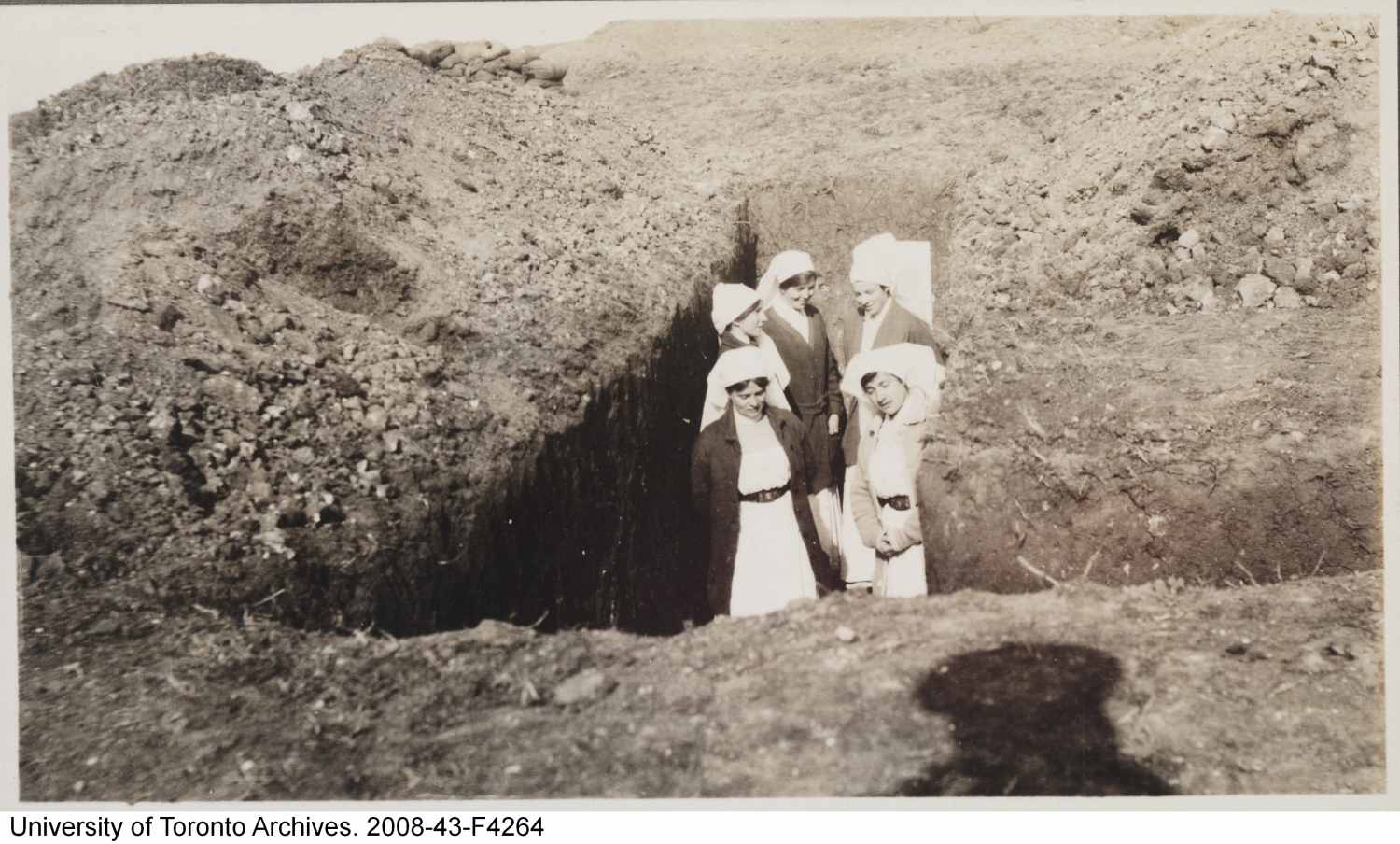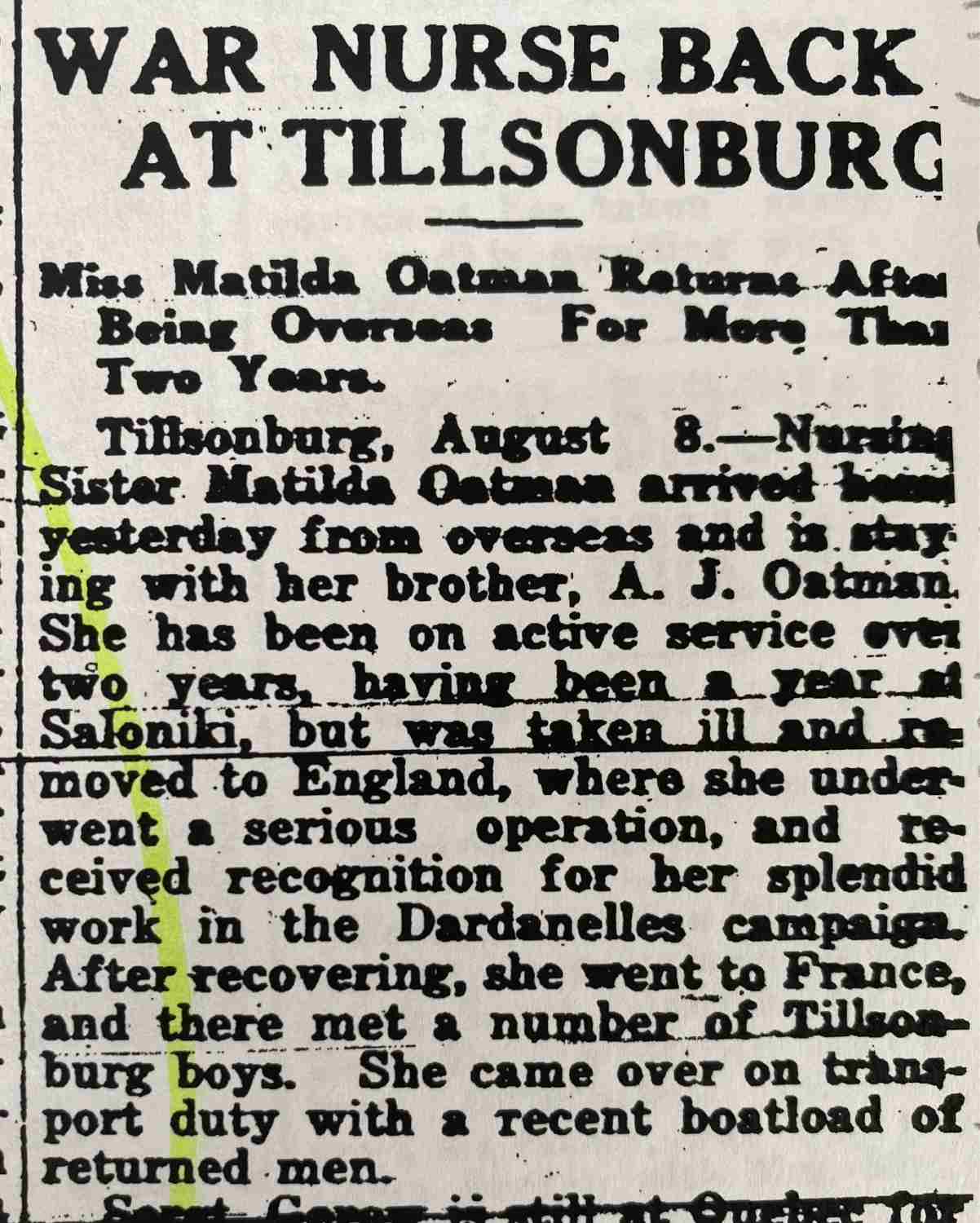WWI Nursing Sister Cecil Matilda Oatman
WWI Nursing Sister Cecil Matilda Oatman
By Liz Dommasch, Archivist
During WWI, more than 2,800 nurses served in the Canadian Army Medical Corps (CAMC), in the specially created all-female rank of Nursing Sister. Affectionately known as “bluebirds” because of their blue uniforms and white veils, these women served near the front lines caring for wounded and sick soldiers, as well as at hospitals abroad and at home caring for convalescents, prisoners of war, and even civilians on occasion.
These women were required to be trained nurses before enlistment and had to possess a high moral character and be physically fit. They also had to be between the age of 21 and 38.
One such woman was Cecil Matilda (Matilda Cecil) Oatman. Born on March 19, 1890, in South Norwich Township. She graduated with a nursing degree from Grace Hospital, Toronto, in 1914. On April 7, 1915, at the age of 25, she would enlist with the CAMC in Toronto and be assigned to the No. 4 General Hospital, University of Toronto. From there, she was sent overseas to the No. 10 British Hospital in Rouen, then back to the No. 4 Canadian General Hospital in Shorncliffe in England, before serving on a hospital ship during the Gallipoli campaign. In 1918, she would be awarded the Royal Red Cross in recognition of her services rendered in the military hospital service overseas during the Dardanelles campaign.

Portrait of Cecil Matilda Oatman courtesy of Annandale National Historic Site, Tillsonburg.
In October 1915, she would be sent with the No. 4 Hospital to Salonika, Greece. The Salonika front began in September 1915. The three-year campaign saw Canadian troops taking part in a multi-national Allied force fighting against the Bulgarians and their allies in the Balkans. Stationed in rugged mountain terrain and primitive working conditions, the nursing sisters cared for thousands of wounded and sick and were recalled to England only after their personnel had been thinned out by malaria and dysentery. Miss Oatman stayed in Salonika for over a year, often ill with intestinal problems. In December 1916, she had surgery for appendicitis and was invalided to England with other nursing sisters suffering from dysentery, jaundice, malaria, shell shock, and other severe surgical cases.

Nursing sisters in a dug-out in process of construction, No. 4 Canadian General Hospital, Salonika, Jan. 1916, Canadian General Hospital No.4 (University of Toronto) fonds, University of Toronto Archives
Upon recovery, she returned to active duty in France, though in 1917 she was granted a leave home. She arrived in Tillsonburg in August of that year and stayed with her brother A.J. Oatman. The Tillsonburg Observer dated August 9th noted that “notwithstanding the long period of hard work and her trying experiences, Miss Oatman is looking well and is cheery as a lark, and eager to return to her duties”.

"War Nurse Back at Tillsonburg", Tillsonburg Observer, 9 August 1917, FP
She would ultimately return to Basingstoke, England with the No. 4 CGH where she stayed through 1918. On June 11, 1919, she married Major Dr. Harry James Shields in Sherbourne, England. Major Shields also served with the No. 4 (University of Toronto) Canadian General Hospital in Salonika from 1915 to 1917, as well as in England till the end of the war. They would ultimately return to Canada and settle in Toronto where he became a prominent Anesthetist. Cecil Matilda Shields would pass away on July 1, 1958, in Toronto and is buried in Mt. Pleasant Cemetery.
